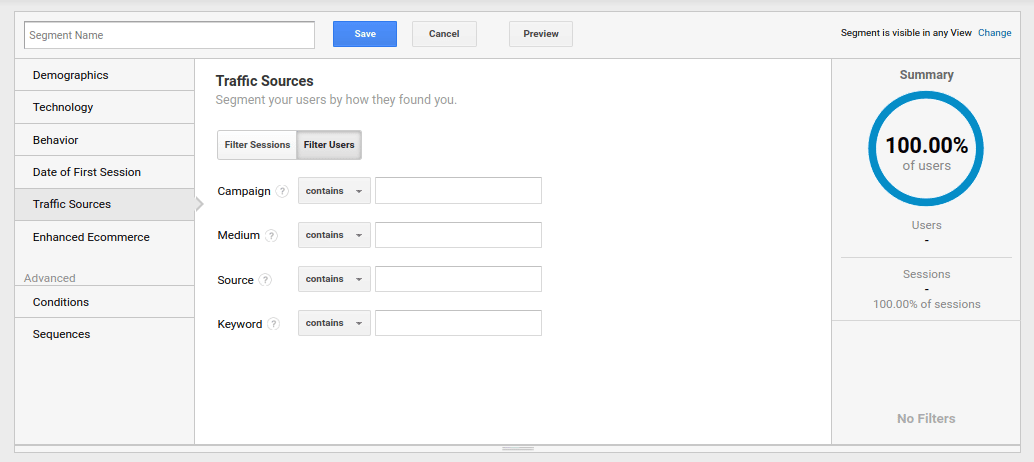Harnessing Remarketing in Google Analytics: A Comprehensive Guide
Harnessing remarketing in Google Analytics offers businesses a strategic side in getting to out to prospective customers. This guide will certainly drop light on the vital steps involved in using the complete potential of remarketing in Google Analytics, leading to improved advertising and marketing results.
Comprehending Remarketing in Google Analytics
Remarketing in Google Analytics allows businesses to purposefully target customers who have formerly communicated with their website or mobile app. By leveraging information from Google Analytics, services can produce customized remarketing checklists based on user habits, such as pages seen, actions taken, or specific objectives achieved. This effective tool makes it possible for services to re-engage with users that have revealed interest in their services or items, ultimately raising the probability of conversion.
Understanding the various types of remarketing strategies is critical for an effective campaign - What Is “Remarketing” In Google Analytics?. Google Analytics uses various choices, including common remarketing, dynamic remarketing, and remarketing lists for search ads (RLSA) Each kind serves a special purpose and can be customized to satisfy specific marketing goals
Additionally, analyzing the performance of remarketing projects is important for enhancing outcomes. Google Analytics offers beneficial understandings into the efficiency of various remarketing approaches, allowing businesses to make data-driven decisions and fine-tune their targeting strategy. By continuously monitoring and changing remarketing efforts based upon analytics information, companies can make the most of ROI and drive success in their marketing initiatives.
Establishing Remarketing Projects

After establishing audience lists, the following action is to link Google Analytics with Google Ads. By connecting these 2 systems, services can effortlessly transfer audience checklists from Google Analytics to Google Advertisements for remarketing objectives. This combination enables more precise targeting and far better project efficiency.
When the accounts are linked, organizations can produce remarketing campaigns in Google Advertisements utilizing the target market notes previously defined in Google Analytics. These campaigns can be tailored with details ad creatives, messaging, and bidding strategies to properly re-engage with past site visitors and drive conversions. By complying with these steps, businesses can utilize the power of remarketing to enhance their marketing initiatives and boost ROI.
Utilizing Audience Segmentation Approaches

Predefined segments in Google Analytics enable you to promptly analyze typical target market categories like new individuals, returning individuals, or customers who completed a certain objective on your website. Customized sectors, on the other hand, enable you to produce one-of-a-kind sectors based on certain criteria that are crucial to your company purposes. Dynamic remarketing listings automatically adjust based on user habits, showing individualized advertisements to customers that have actually connected with your website specifically means.
Studying Remarketing Efficiency Metrics
Upon evaluating the performance of remarketing projects in Google Analytics, the analysis of key efficiency metrics company website supplies valuable understandings into audience interaction and conversion prices. By delving right into metrics such as click-through rates (CTR), conversion prices, cost per purchase (CPA), and return on advertisement spend (ROAS), online marketers can determine the success of their remarketing efforts. Analyzing these metrics allows marketing experts to enhance projects, improve audience targeting, and allot budget plans efficiently to boost overall remarketing efficiency.
Optimizing Remarketing Methods
When refining remarketing techniques in Google Analytics, concentrating on audience division is critical for attaining campaign success. By separating your target market into specific sections based upon their actions, demographics, or passions, you can tailor your ads better per group. This targeted approach enhances the probability of involving users that have actually currently shown passion in your services or items, leading to greater conversion rates.
Another vital aspect of maximizing remarketing approaches is continuously screening and refining your campaigns (What Is “Remarketing” In Google Analytics?). A/B screening various ad creatives, messaging, or offers can help you determine what resonates best with your audience and drives one of the most conversions. By analyzing the efficiency of these examinations in Google Analytics, you can make data-driven choices to enhance your remarketing efforts even more
Moreover, leveraging dynamic remarketing can considerably improve your campaign results. This feature permits you to reveal tailored advertisements to individuals based on their previous interactions with your site, showcasing service or products they have previously viewed. By supplying customized content to users based upon their behaviors and passions, dynamic remarketing can help enhance engagement and drive conversions.
Conclusion
In verdict, using remarketing in Google Analytics is a calculated method to target users that have actually previously involved with a site. By creating personalized audience listings and utilizing target market segmentation approaches, services can enhance remarketing projects for enhanced conversion prices. Evaluating performance metrics and constantly optimizing methods are essential for taking full advantage of the effectiveness of remarketing efforts.
Google Analytics offers different options, consisting of basic remarketing, vibrant remarketing, and remarketing lists for search advertisements like this (RLSA)After setting up target market lists, the following step is to connect Google Analytics with Google Ads. By linking these 2 platforms, organizations can effortlessly move audience checklists from Google Analytics to Google Ads for remarketing functions.As soon as the accounts are linked, services can create remarketing campaigns in Google Advertisements using the target market notes formerly defined in Google Analytics.When refining remarketing methods in Google Analytics, concentrating on target market division is extremely important for my blog achieving campaign success.